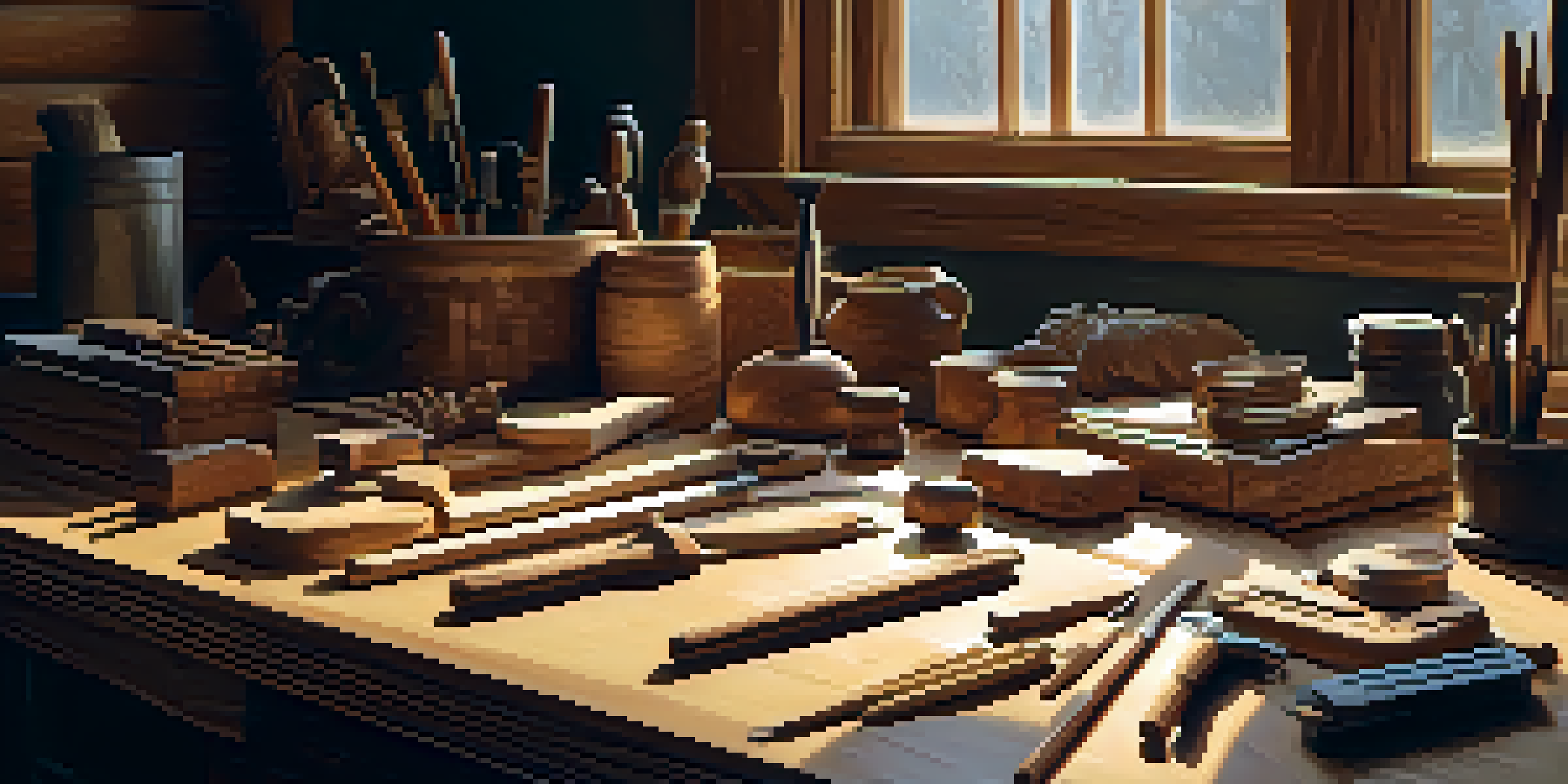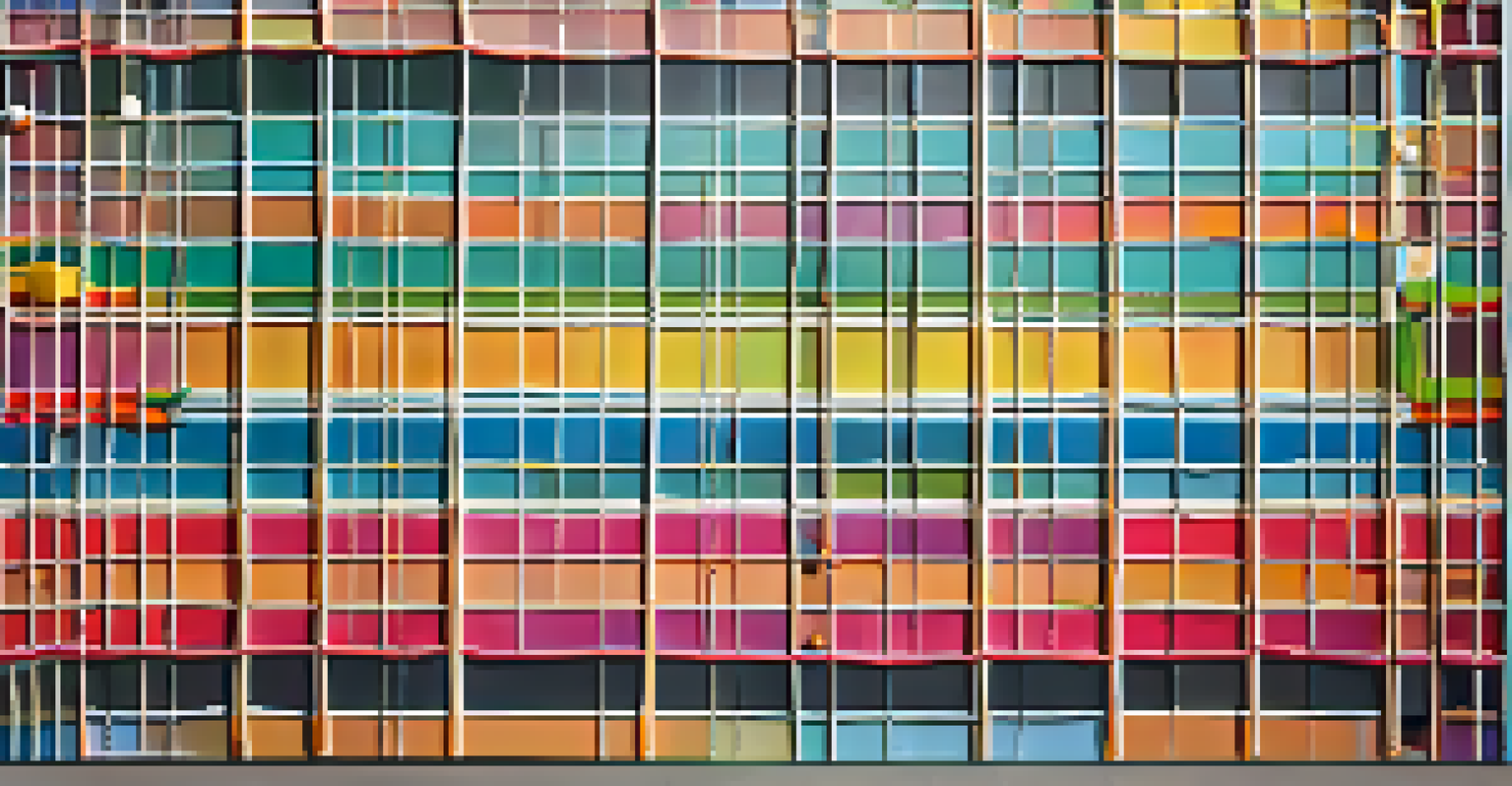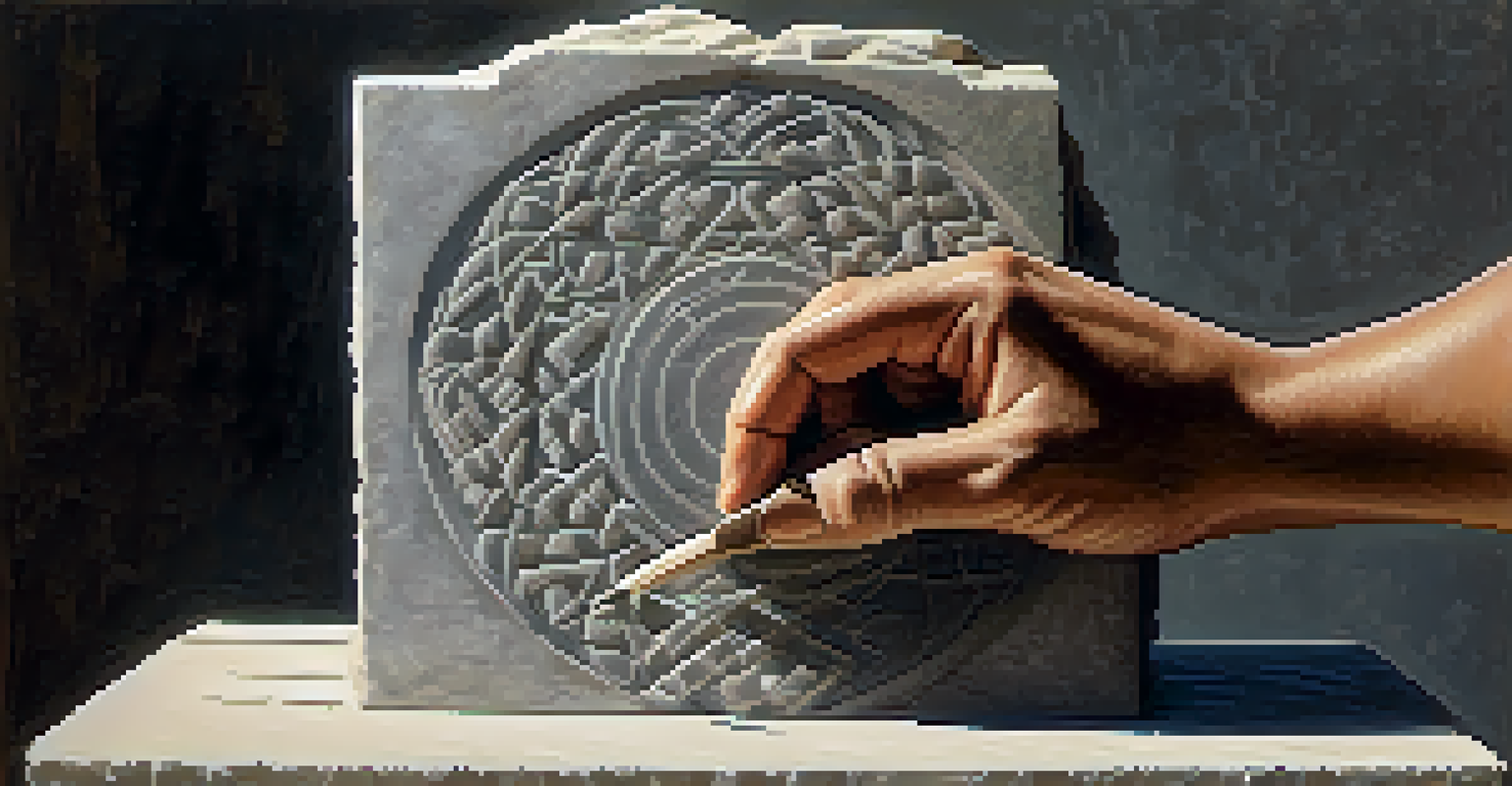Proportional Grids: Structuring Carving Designs Effectively

Understanding Proportional Grids in Carving Design
Proportional grids are frameworks that help artists and designers maintain balance and harmony in their work. By dividing a space into proportional sections, these grids guide the placement and scaling of design elements. This structured approach can make even the most complex designs more manageable and appealing to the eye.
Good design is all about balance. It’s about creating a sense of harmony within the elements and the whole.
Imagine painting a mural on a large wall. Without some sort of guide, you might end up with uneven proportions or misplaced elements. Proportional grids act like a roadmap, ensuring each part of your design fits together cohesively, much like pieces of a puzzle coming together.
In carving, where precision is key, using a proportional grid can enhance not only the aesthetics but also the functionality of the piece. With a clear structure in place, artists can focus on the details, knowing that the overall composition will remain intact.
The Benefits of Using Proportional Grids
One of the main advantages of proportional grids is that they help create visually appealing designs. By adhering to a grid, you can ensure that the elements of your carving are proportionate, which leads to a more harmonious final product. This principle is not just applicable to carving but is widely used in various forms of visual art.

Consider the famous golden ratio, a mathematical ratio commonly found in nature that is often used in art and design. Proportional grids can be adjusted to reflect these ratios, allowing artists to create pieces that resonate with viewers on a deeper level. This connection can make your work more impactful and memorable.
Proportional Grids Enhance Design
Using proportional grids helps artists maintain balance and harmony in their designs, making complex projects more manageable.
Additionally, proportional grids can streamline the design process. By establishing a clear framework from the start, you reduce the chances of making corrections later on, saving both time and resources. This efficiency allows artists to focus more on creativity rather than troubleshooting.
How to Create Your Own Proportional Grid
Creating a proportional grid is easier than it sounds. Start by determining the dimensions of your carving surface and decide how many sections you want. You can use graph paper, digital design tools, or even a simple ruler to divide the space proportionally, ensuring that the sections are evenly distributed.
Art is not freedom from discipline, but disciplined freedom.
For example, if you’re working on a rectangular piece, you might divide it into thirds both horizontally and vertically. This will give you a total of nine sections to work within, allowing you to place your design elements in a way that feels balanced and intentional.
Once your grid is in place, it’s time to start sketching out your design. Use the intersections of the grid as reference points for placing key features of your carving. This method not only helps with proportion but also enhances the overall flow of your design.
Incorporating the Grid into Your Carving Workflow
Integrating a proportional grid into your carving workflow can be a game-changer. Start by transferring your grid onto your carving medium, whether it’s wood, stone, or another material. This step ensures that your design is consistent throughout the carving process.
As you begin to carve, refer back to the grid to maintain proportions and alignment. This practice helps prevent common issues like disproportionate features or misaligned patterns, which can occur during the carving process. Think of the grid as your artistic compass, guiding you in the right direction.
Streamlined Carving Process
Establishing a proportional grid from the start reduces the need for corrections, allowing artists to focus on creativity.
Moreover, once you get used to working with a grid, you may find it becomes second nature. Over time, you might even begin to visualize proportional relationships without the grid, enhancing your artistic intuition and skill.
Common Mistakes When Using Proportional Grids
Despite their advantages, there are common pitfalls to avoid when using proportional grids. One mistake is not adjusting the grid according to the specific design elements you’re working with. Each carving project may require a unique approach, and a one-size-fits-all grid may not yield the best results.
Another error is becoming overly reliant on the grid. While it’s a helpful tool, it’s important to allow for creativity and spontaneity in your design. Striking a balance between structure and artistic freedom can lead to some of the most innovative outcomes in your work.
Lastly, ensure that you keep your grid visible throughout the carving process. Sometimes, artists can get so wrapped up in the details that they lose sight of the overall proportions. Regularly checking back with the grid can help maintain that crucial balance.
Examples of Proportional Grids in Famous Carvings
Many renowned artists and carvers throughout history have utilized proportional grids to create their masterpieces. For instance, Michelangelo is often noted for his precise use of proportions in sculptures. His ability to maintain balance and scale in his work can be attributed in part to the careful planning that proportional grids provide.
In contemporary carving, artists may take inspiration from traditional methods but adapt them to modern aesthetics. Grids can help these artists blend old and new techniques, creating pieces that honor the past while pushing the boundaries of contemporary design.
Common Mistakes to Avoid
Avoid becoming overly reliant on grids and ensure they remain visible to maintain overall proportions during the carving process.
Exploring these famous examples can inspire your own work. By studying how others have effectively incorporated grids into their designs, you can gain insights that may enhance your own carving projects.
Conclusion: Mastering Proportional Grids for Carving Success
Mastering the use of proportional grids can significantly elevate your carving designs. With their ability to provide structure and balance, grids give you the confidence to explore your creativity while maintaining a harmonious composition. As you become more familiar with this technique, you'll likely find it transforming how you approach your art.
Remember that the goal is not just to replicate a grid but to use it as a tool for better design. Embrace the flexibility that comes with understanding proportions, and don’t hesitate to experiment with different grid configurations for various projects.

In the end, the journey of carving is as much about discovery as it is about technique. By integrating proportional grids into your workflow, you’re not just creating art; you’re honing a skill that will serve you well throughout your artistic endeavors.